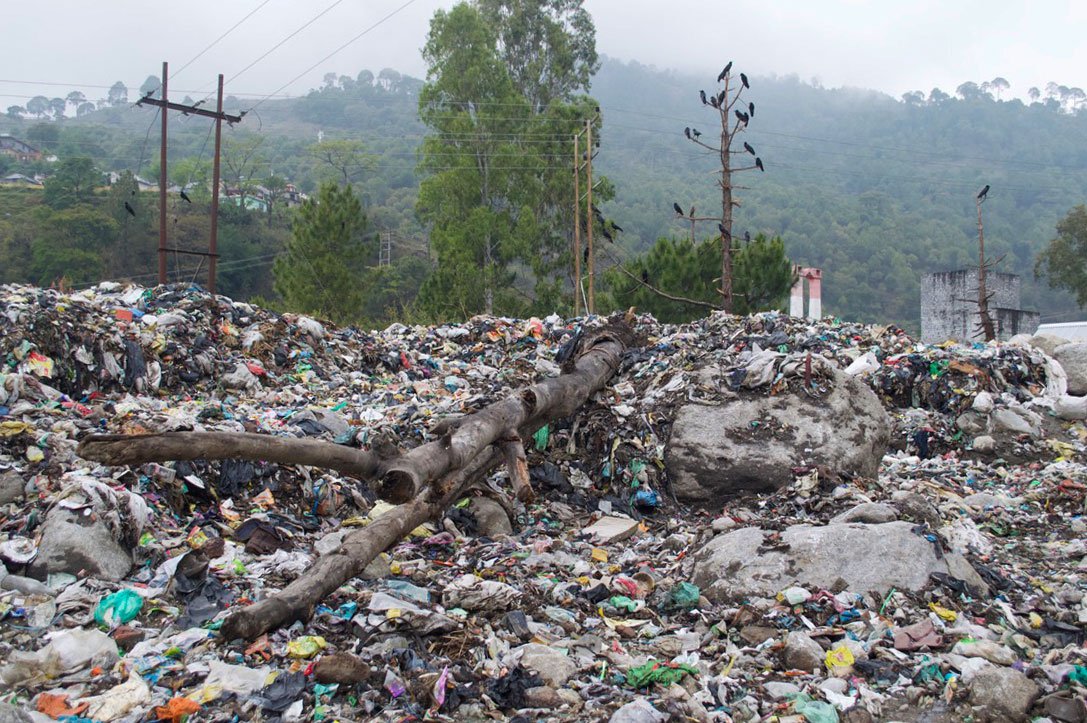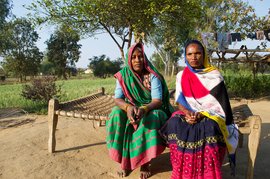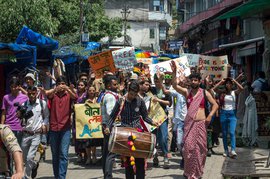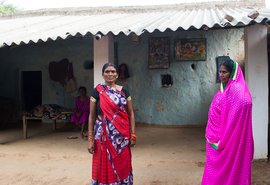Himachal Pradesh is known for snow-capped mountains. But in the town of Palampur in Kangra district, there is a different mountain growing – one of waste.
A major tourist destination, the state saw an inflow of 172 lakh people in 2019, up from 149 lakh in 2011, says this report by the National Green Tribunal. Tourism plays an important part in the economy here and Kangra district alone has almost 1,000 hotels and homestays. The crush of tourists is a major factor in the growing piles of waste now spilling onto pristine land and river banks, irreparably damaging the fragile ecosystem of this hill town.
“This was an open ground and children used to play here,” reminisces 72-year-old Galora Ram who lives a few minutes away from the landfill location.
“This whole area used to be green and full of trees,” says Shishu Bhardwaj (name changed). He is pointing to the sprawling dumpsite visible from his tea shop. “They [the municipality] cut trees down to make more space as more and more waste started coming here. “It smells! And there are so many flies,” adds the 32-year-old.
His shop is situated on land next to the Palampur garbage dump that is sprawled across an estimated five hectares of land. Cloth waste, plastic bags, broken toys, discarded clothes and household items, kitchen waste, industrial waste, hazardous medical waste and more lie in heaps; despite the rain, flies swarm around incessantly.
When Shishu first set up shop in 2019, there was
a recycling plant in the area where waste from three panchayats used to get
sorted and recycled. When the pandemic hit and after, all the waste from all
wards have been coming to the dumpsite and only manual labour is being used for
sorting.
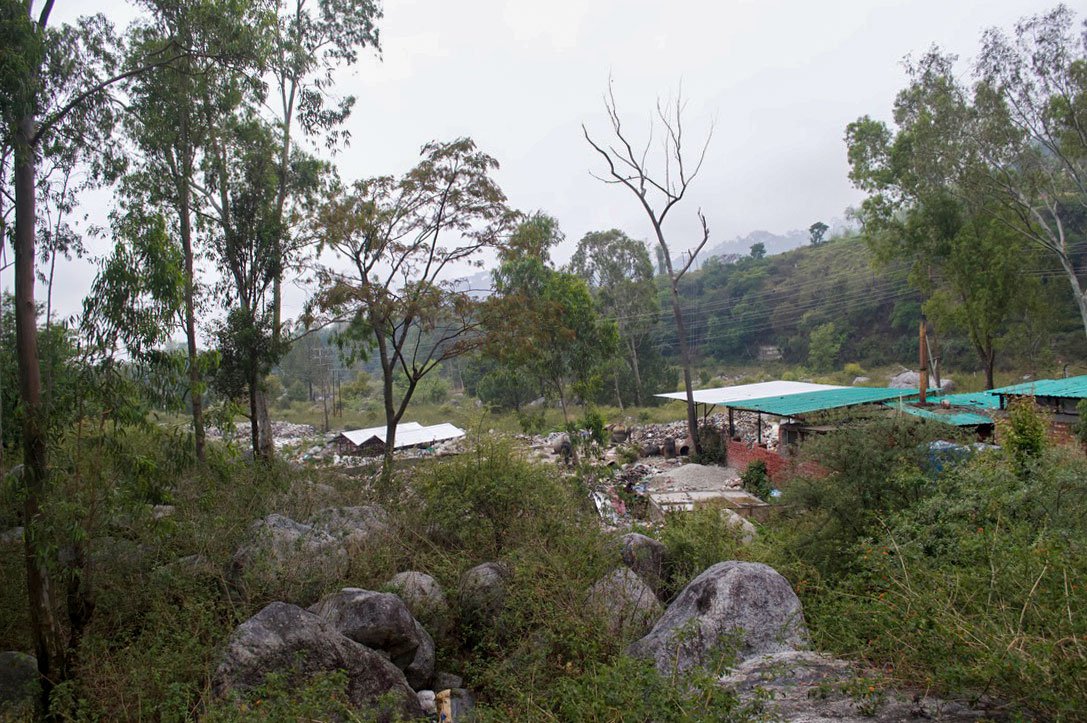
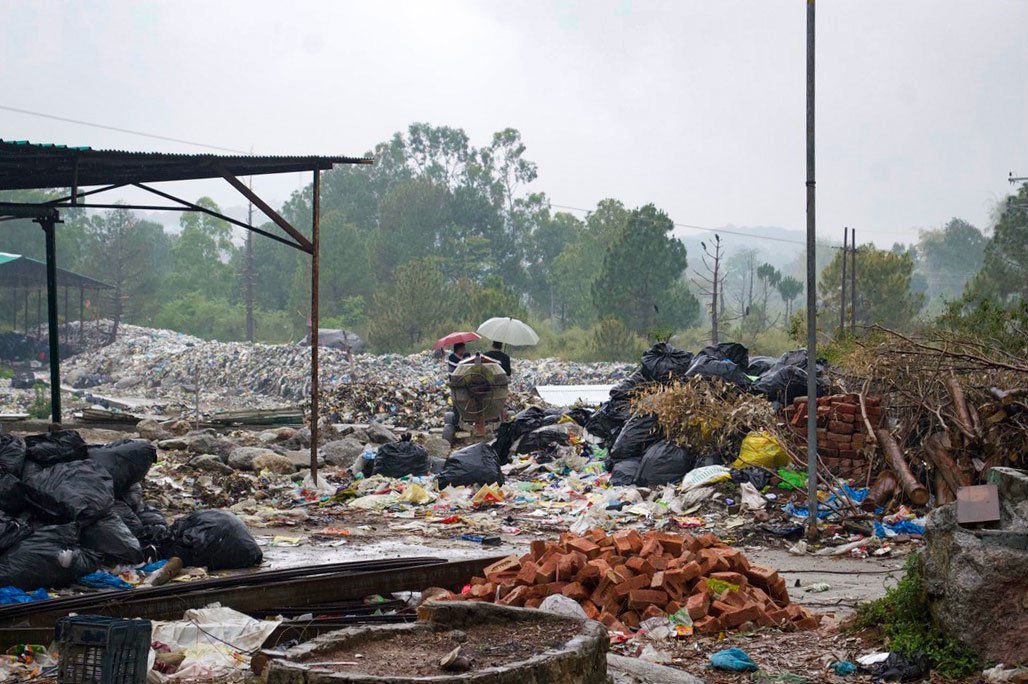
Left : Waste dump as visible from Shishu Bhardwaj's tea shop in Palampur, Kangra. Right: (In the background) Ashish Sharma, the Municipal Commissioner of Palampur and Saurabh Jassal, Deputy Commissioner Kangra, surveying the dumpsite
Recently, the Municipal Commissioner has installed new waste sorting machines and has claimed that recycling will begin again.
Locals point out that the explosion of waste in the region has not been addressed by the local government and it has not planned for a scientific landfill to keep pace with development. The current dumpsite lies dangerously close to the Neugal River that joins the Beas, an important source of potable water in the region and further downstream.
Although the small hill town, at an altitude of between 1,000 to 1500 metres above MSL, Palampur did not get much of the 720 mm of torrential rain experienced by Himachal Pradesh in the recent month of August 2023, many worry that it is only a matter of time.
“Such intense rains can increase the amount of contamination from the waste into the river and soil,” points out Fatema Chappalwala. A member of Kangra Citizens Rights Forum, she moved here from Mumbai and now lives in the village of Kandbari, a small hamlet 12 kms away. Fatema and her husband Mohammed have worked with local citizens on the issue of the dumpsite for many years.
“All the dirt and garbage is dumped here. And
about two to three years ago they started dumping more garbage,” says Galora Ram,
a resident of Uwarna, a hamlet roughly 350 metres from the dumpsite. “We are
getting sick. The children vomit from the smell,” he says. The 72-year-old says
that people have been getting sick ever since the dumpsite was expanded.
“Children have changed schools because they don’t want to cross the dumpsite to
get to the school as this is the only path to get to school.”
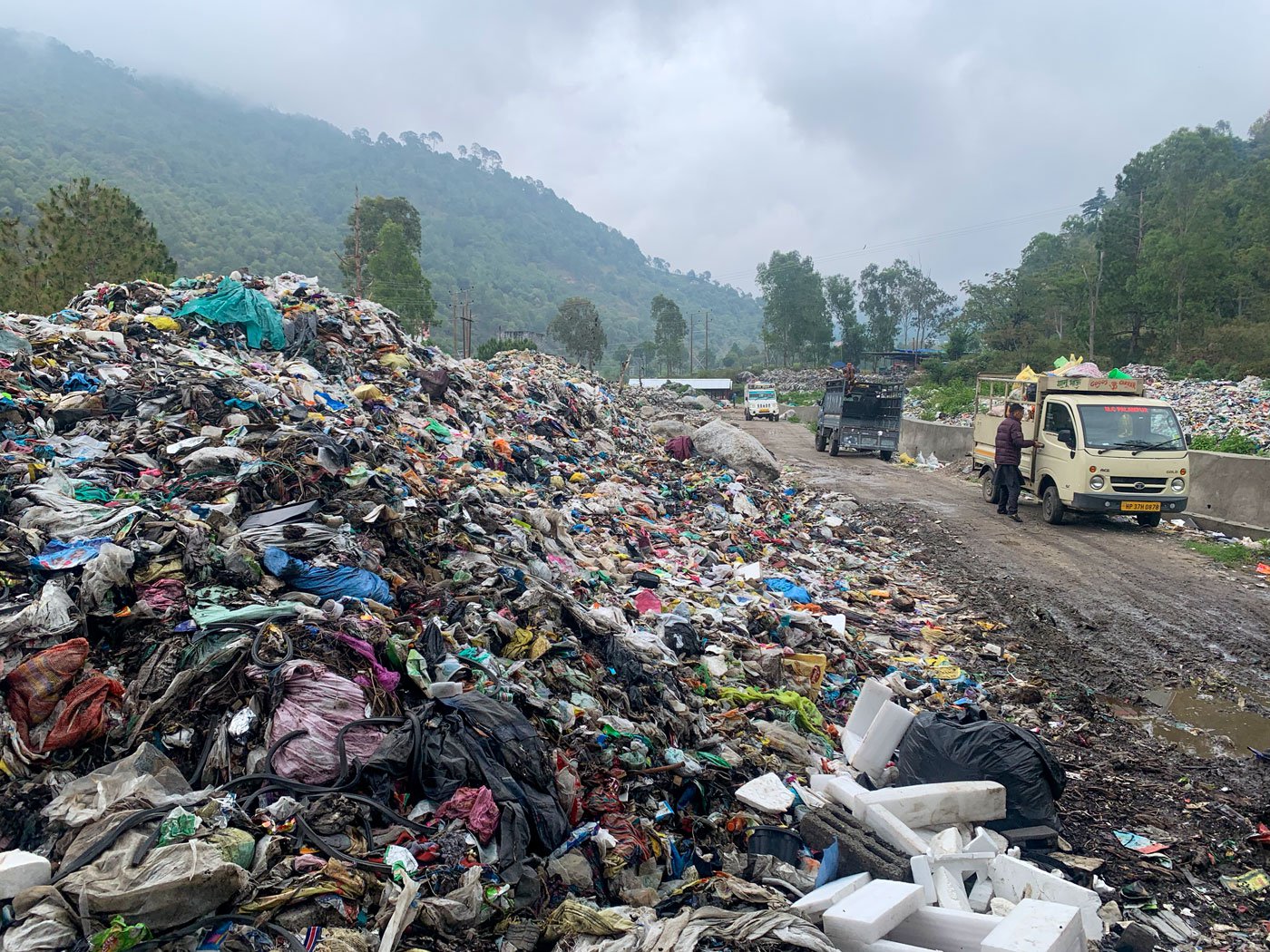
Cloth waste, kitchen waste, industrial waste, hazardous medical waste and more lie in heaps at the garbage site
*****
Big disasters get more attention but it is the everyday disasters that we have normalised – the waste lying on the side of the river, points out Manshi Asher. A researcher with local environmental organisation Himdhara, says, “if you have waste management facilities close to the rivers then it's only going to add to the muck in the river contaminating the health of the river.”
“In a predominantly rural mountain region, urban waste invariably ends up encroaching on riverbeds, forests and grazing lands,” she adds. The contaminated and mixed waste leaches into the soil and gets into the water supply, with most people getting their drinking water from groundwater. The water is also used for crops downstream right up to Punjab.
A 2021 report by the Central Pollution Control Board found that Himachal Pradesh has 57 dumping sites, but not one sanitary landfill. As opposed to a dumpsite, a sanitary landfill is designed with a top cover and has a liner and leachate collection system to prevent groundwater contamination, among other safeguards. It should also come with a closure and post-closure plan. The same report also ranks the state 18th out of 35 in their assessment of waste management. In October 2020, 14 panchayats were brought together under a new Palampur Municipal Corporation (MC) consisting of 15 wards . Mohammed Chappalwala is a member of the Kangra Citizens Rights Forum. He says, “before Palampur became an MC, most of the panchayats were taking care of their own waste, but since we became an MC, there has been a huge spike in waste and it is all going to one location – even the hospital waste.”
According to the 2016 Solid Waste Management handbook under the Ministry of Urban Development, to have a landfill site, an urban local body or ULB must adhere to the following guidelines: “Landfill sites shall be set up as per the guidelines of the Ministry of Urban Development, Government of India and Central Pollution Control Board. The landfill site shall be 100 metres away from the river, 200 metres from a pond, 200 metres from Highways, Habitations, Public Parks and water supply wells…”
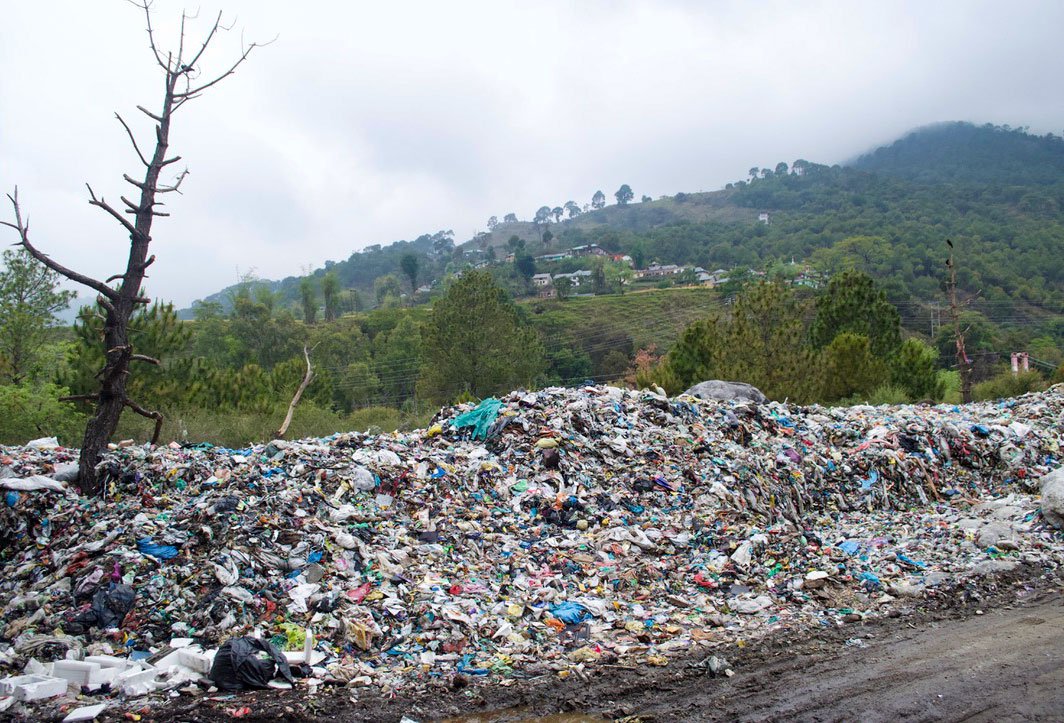
The landfill sprawls across an estimated five hectares of land
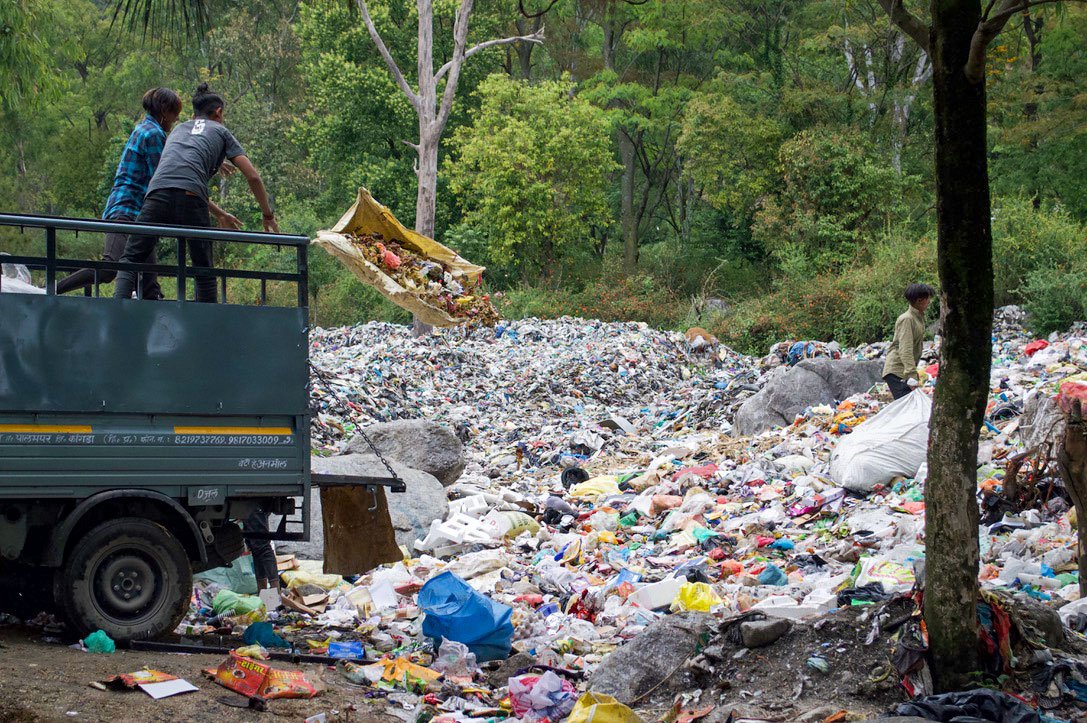
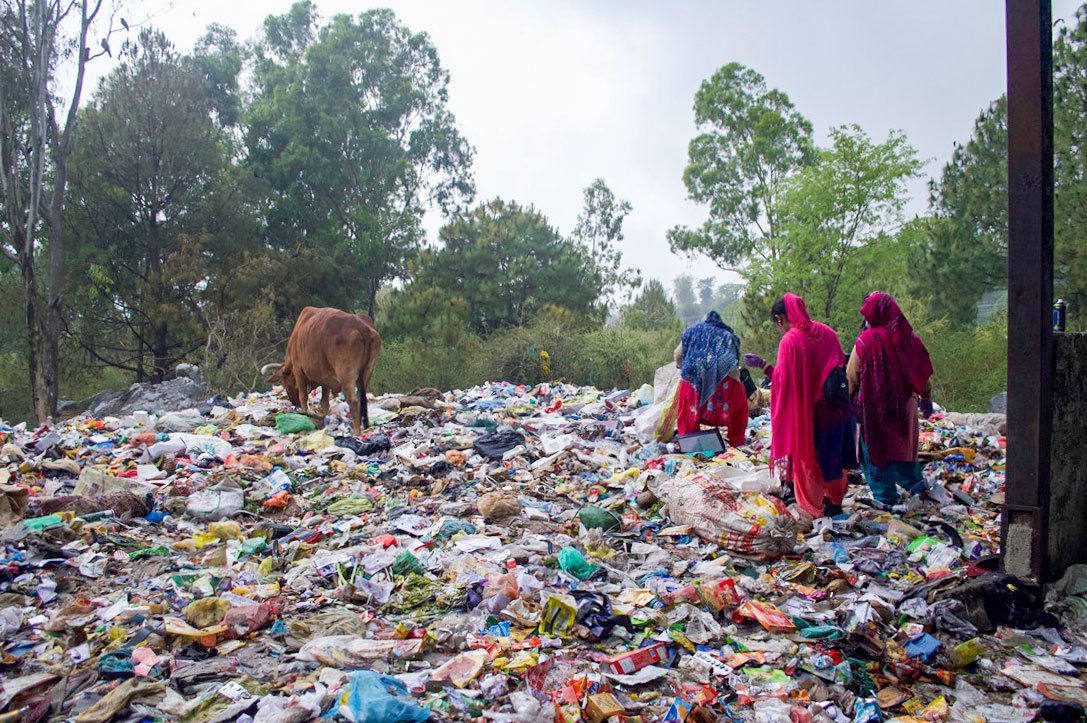
Left: Waste being unloaded at the dump site. Right: Women waste workers sorting through trash for recyclable items
Last year, the local citizens motivated us to join their call to action and asked for help, so we decided to raise an RTI (Right to Information). According to Mohammed, the Commissioner’s office received the RTI on March 14, 2023 and replied on April 19, but there were no real answers. “There were blanks next to many of our questions,” he continues.
Nobody knows how much waste is being generated. “Every time I come back to check, the dumpsite keeps getting bigger and now it's right against the Neugal river and waste is going in,” says Mohammed.
Recently seven waste sorting machines have been installed in the dumpsite, and according to local journalist Ravinder Sood, five are operational, including a shredder being used to reduce dry waste.
However, Bhardwaj, who has observed the changes from his tea shop says, “The machines have come, but because of the rains, none of them are working, and things have stayed the same. The smell, the impact is still the same as it was.” And his neighbour Ram adds, “We want them to put the dumpsite somewhere else to help our lives, our children’s lives.”
